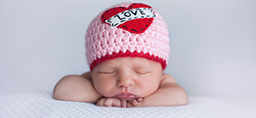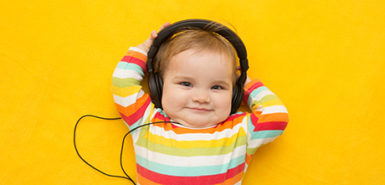
We’ve examined the newborn screening test and we’ll soon be looking at the critical congenital heart defect test.
But there’s another test that will be performed on your new baby before you both leave the hospital and head home: the hearing screening test.
The American Academy of Pediatrics recommends all newborns have a hearing screening done by 1 month of age, but most hospitals do this before baby heads home.
This test can be done in the nursery or in the room with the parents.
You may wonder how a baby can take a hearing test.
Well, it’s not like an adult hearing test, where you lift your hand to indicate which side you hear the sound.
There are two ways your baby might be screened.
One: Otoacoustic emission, or OAE. This is where a small, soft earphone is placed into your baby’s ear, measuring the echo response that would be expected with normal hearing. If there is no echo, then baby doesn’t pass the test.
Two: Auditory brain stem response, or ABR. This involves using the earphone as well, but electrodes are also placed on baby’s head to measure the response to sound.
Why are these hearing tests so important? Up to 3 of every 1,000 babies are born with hearing loss each year in the U.S.
I found an interesting article from 2012 that suggested babies delivered by C-section are more apt to fail their first hearing screening.
The study involved more than 1,600 babies in Israel. When the C-section babies had a hearing test performed before they reached 2 days old, 21 percent failed the test, compared to 7 percent of vaginally born babies.
When performed after two days, the C-section babies had an 8 percent failure while the vaginally born babies had 1 percent failure. All of the babies that didn’t pass the test ultimately ended up passing upon further testing, the study found.
The researchers recommended that hearing tests not be performed until babies are at least 2 days old. (The study offered no speculation as to why C-section babies failed at a greater rate in those first two days.)
Another report found that, in Canadian children who went unscreened, a diagnosis of hearing loss did not come until the children were 24 months of age, on average. (Not all children in the study had been checked for hearing loss at birth.)
You might think it would be easy to know if your baby couldn’t hear, but babies may turn to what we think is sound when it’s really a visual change they’re noticing.
Also, babies with hearing loss can make babbling sounds. I’ve heard others say babies won’t babble if they can’t hear, but that’s not true.
Children learn to talk by listening. Hearing sounds is important for auditory language skills.
Did you know that babies begin to develop language skills at birth?
You need to be able to hear yourself and others clearly for spoken language. Though we use our ears to hear, the sound is actually organized and recognized in the brain.
If your baby doesn’t pass the hearing test, you might want to have it repeated. You can also make an appointment with your baby’s doctor and proceed from there.
 /a>
/a>
 /a>
/a>
 /a>
/a>